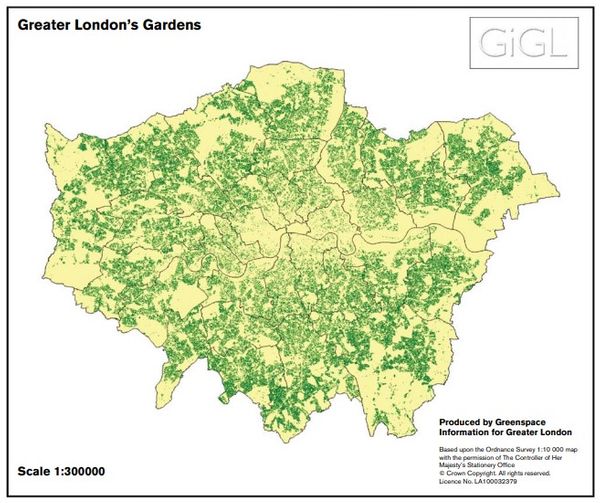
London: garden city? From green to grey; observed changes in garden vegetation structure in London, 1998-2008 - London Wildlife Trust (2011)
This London Wildlife Trust, Greenspace Information for Greater London, and Greater London Authority project surveyed the gardens of London.
It had been understood that this land was valuable for people and wildlife, and that climate change means it becomes even more important. But until the report, the character and scale of this resource has not been fully documented.
Gardens are where Londoners have very real power to protect, conserve and create life.
The project found:
- London has 3.8 million gardens, covering 24% of the capital.
- A 3,000 hectare loss of garden greenery over the survey period. That is 2.5 Hyde Parks per annum.
- The loss of an estimated 1 million trees – from both front and rear gardens
This project aimed to generate a baseline of information regarding London’s gardens to inform our understanding of their role for wildlife, people and the environment, to develop transferable methods of investigation, and interrogate some key lines of enquiry from stakeholders. In particular, the project aimed to: a) establish the current garden resource in London in terms of overall land use and variation within this; b) quantify the changes that have occurred to land cover within London’s gardens over recent years and; c) provide evidence to focus campaigns, policy and other action to enhance gardens for wildlife.
http://downloads.gigl.org.uk/website/Garden%20Research%20Full%20report.pdf
(!) This survey is now getting quite old. Wouldn't it be great if we could work together to get it re-run to test whether the trends in garden vegetation loss have increased or declined, to inform future urban greening policy.
How green are British front gardens? - RHS (2015)
An Ipsos MORI poll for Royal Horticultural Society to understand greenery in British front gardens.
Ipsos MORI conducted a survey of 2,067 adults across Great Britain to help the Royal Horticultural Society (RHS) understand how common it is for driveways and front gardens to be green areas (including grass, plants or trees) and what benefits people perceive greener streets to bring to themselves and local communities. The survey also captures the key barriers to greening these areas of our homes and considers what types of support might encourage this.
https://www.ipsos.com/ipsos-mori/en-uk/how-green-are-british-front-gardens
Why we all need Greening Grey Britain - RHS (2015)
The RHS-commissioned Mori Polls of 2005 and 2015 reveal that three times as many front gardens are now paved over compared to ten years ago, a total increase of 15 square miles of ‘grey’, and that plant cover in front gardens has decreased by as much as 15%. Over five million front gardens now have no plants growing in them (that’s one in three for the UK) and four and a half million front gardens (one in four) are completely paved over.
https://www.rhs.org.uk/communities/archive/PDF/Greener-Streets/greening-grey-britain-report.pdf
